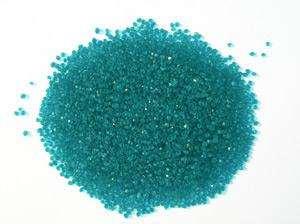The role and use of battery grade nickel sulfate
Battery Grade Nickel SulfateThere are 3 kinds of water or no water, 6 kinds of water or 7 kinds of water. Most of the products are hexahydrate, there are 2 variants of alpha and beta, one is blue cubic crystal, and the other is green monoclinic crystal. When heated to 103 degrees, 6 crystals are lost. Soluble in water, slightly soluble in ethanol, methanol, its solution is acidic, slightly soluble in acid, ammonia water, toxic.
Battery grade nickel sulfate is used in the electroplating industry and is the main nickel salt for electroplating nickel and electroless nickel. It is also a source of metallic nickel ions. It frees nickel ions and sulfate ions during the electroplating process. In the production of hardened oils, it is Catalyst for oil hydrogenation. The pharmaceutical industry is an inorganic industry for the production of vitamin c oxidation catalysts, as the main raw material for the production of other nickel salts such as nickel ammonium sulfate. Phthalocyanine blue complexing agent is used in the printing and dyeing industry, is a kind of reducing Coal dye for dyes. In addition, it can also be used in the production of nickel-cadmium batteries.

Using Risk Prediction:
1. Health Hazards: Respiratory tract irritation after inhalation. It may cause asthma and sagging lungs, and may cause bronchitis, eye irritation. Skin contact can cause dermatitis and eczema with severe itching known as "nickel itching". Causes nausea, vomiting and dizziness.
2. Environmental hazards: Hazards to the environment, which can pollute the atmosphere.
3. Explosion hazard: This product is non-flammable and irritating.
first-aid:
1. Skin contact: Remove clothing and rinse skin with water.
2. Eye contact: Rinse with tap water or normal saline. See a doctor in time.
3. Inhalation: Keep fresh air on site, if breathing is difficult, give oxygen. See a doctor in time.

